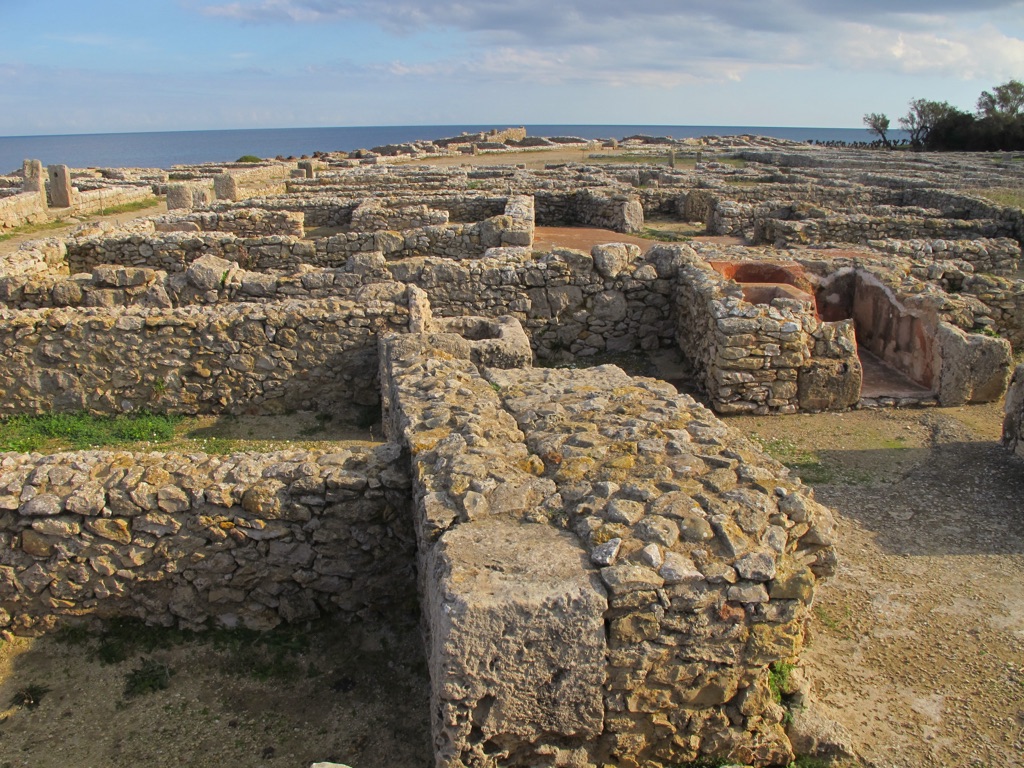Kerkouane is a unique archaeological site located on the northeastern coast of Tunisia. It stands as a testament to the ancient Carthaginian civilization. This site is particularly significant because it’s one of the few Punic cities to have survived the destructions of the First Punic War. It provides valuable insights into the urban layout, residential architecture, and daily life of the Carthaginians before the Roman conquest. Kerkouane was inscribed as a UNESCO World Heritage site in 1985, highlighting its importance and the need for its preservation.
Get your dose of History via Email
Historical Background of Kerkouane
Archaeologists discovered Kerkouane in the early 20th century. The site’s excavation began in 1952, led by French archaeologist Charles Saumagne. The city’s origins trace back to the 6th century BC, built by the Carthaginians. It thrived as a small but prosperous settlement until its abandonment during the First Punic War between Rome and Carthage.
After its initial abandonment, there’s no evidence that Kerkouane saw significant re-inhabitation. This lack of later occupation has allowed archaeologists to study a purely Punic urban environment. The city did not witness any historically significant battles or events. Instead, its value lies in its everyday details, providing a snapshot of Carthaginian life.
The people who built Kerkouane were skilled in various crafts, as evidenced by the remains of their work. The city’s layout, with its houses, streets, and public buildings, reflects a planned urban development. The Carthaginians who lived here were part of a wider civilization known for its seafaring and trade across the Mediterranean.
Although Kerkouane was not the scene of major historical events, its discovery has significantly contributed to understanding Carthaginian culture. The site offers a rare glimpse into the domestic architecture and urban planning of a civilization that often remains enigmatic due to the lack of surviving Punic texts.
The city’s abandonment seems to have been quite sudden, which has led to excellent preservation of the site. This has allowed archaeologists to study the city’s layout and buildings without the usual overlying layers of later historical periods, making Kerkouane a key site for understanding the Carthaginian period.
About Kerkouane
Kerkouane’s ruins reveal a well-planned city with a regular street grid. The houses typically feature a central courtyard surrounded by various rooms. These homes showcase the domestic architecture of the Carthaginians, with elements like tophets, or burial grounds, indicating religious practices.
The construction methods at Kerkouane included the use of cut stone and mudbrick. The city’s buildings often had floors decorated with colorful mosaics, some of which are still visible today. The use of stone and mosaics reflects the residents’ wealth and the city’s economic status.
One of the architectural highlights of Kerkouane is the presence of advanced sanitation systems. The city had stone-lined streets with drainage and homes equipped with baths and latrines, indicating a high standard of living and concern for hygiene.
The craftsmanship of Kerkouane’s inhabitants is evident in the remains of their work. The site has yielded numerous artifacts, including pottery, jewelry, and tools, which were likely produced by local artisans. These finds provide insight into the daily lives and economic activities of the city’s residents.
Overall, Kerkouane’s architecture and artifacts reflect a sophisticated urban society. The city’s layout and building techniques demonstrate a blend of local traditions and influences from the broader Mediterranean world, which was typical of the Carthaginian civilization.
Theories and Interpretations
Several theories exist about Kerkouane’s use and the reasons for its sudden abandonment. Some suggest it was primarily a religious center, while others believe it was a prosperous commercial hub. The presence of tophets supports the idea of religious significance.
The mysteries of Kerkouane include the exact nature of its economy and the daily lives of its inhabitants. Archaeologists have had to interpret the city’s layout and artifacts to piece together a picture of life in Kerkouane. These interpretations often rely on comparisons with other Carthaginian sites.
Dating of the site has been carried out using various methods, including stratigraphy and pottery typology. These techniques have helped establish the timeline of Kerkouane’s occupation and its eventual abandonment around the time of the First Punic War.
Some interpretations of Kerkouane’s layout suggest a society with a degree of social stratification. The size and complexity of certain homes indicate that wealthier individuals may have lived there, while other, simpler structures suggest the presence of less affluent citizens.
Despite the extensive research, Kerkouane still holds many secrets. Ongoing archaeological work continues to refine our understanding of this unique Punic city and its place within the wider Carthaginian world.
At a glance
Country: Tunisia
Civilization: Carthaginian
Age: 6th century BC

